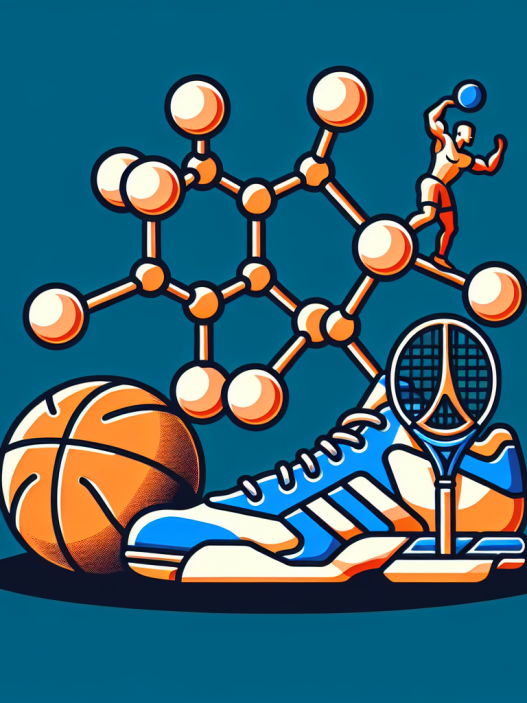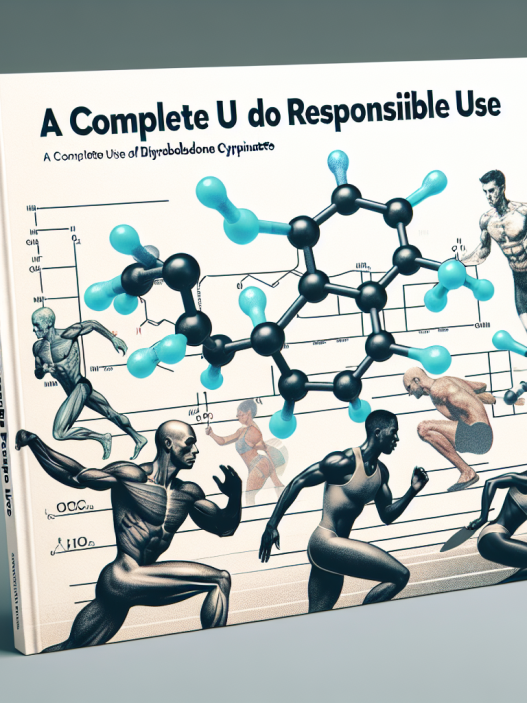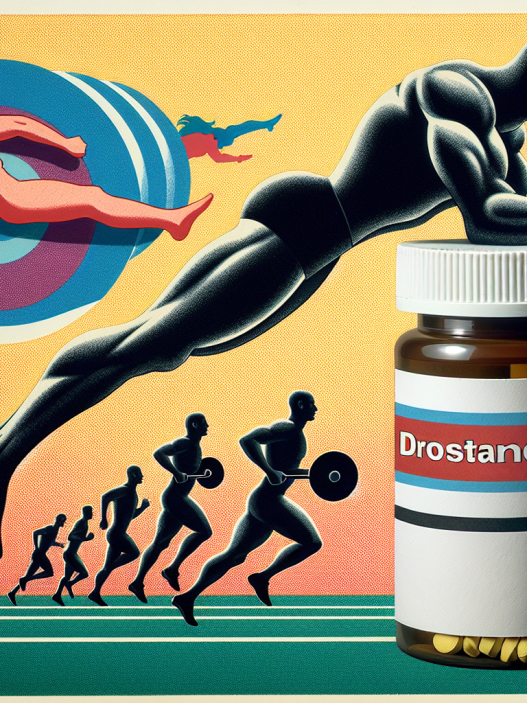-
Table of Contents
Boldenone: A Controversial Anabolic in Sports
Anabolic steroids have been a hot topic in the world of sports for decades. These synthetic hormones, derived from testosterone, have been used by athletes to enhance their performance and gain a competitive edge. One such steroid that has gained notoriety in recent years is boldenone. This anabolic has been at the center of numerous controversies and debates, with some claiming its benefits in sports while others denounce its use. In this article, we will delve into the pharmacology of boldenone and explore its role in sports.
What is Boldenone?
Boldenone, also known as 1-testosterone, is an anabolic steroid that was first developed in the 1950s. It is a modified form of testosterone, with an added double bond at the first and second carbon positions. This modification gives boldenone a higher anabolic to androgenic ratio, making it a more potent muscle-building agent compared to testosterone.
Originally, boldenone was developed for veterinary use, specifically for horses. It was used to increase their appetite and promote weight gain. However, it soon caught the attention of bodybuilders and athletes due to its anabolic properties. Today, boldenone is available in both injectable and oral forms and is used by athletes to improve their physical performance and appearance.
Pharmacokinetics of Boldenone
Like other anabolic steroids, boldenone is metabolized in the liver and excreted through the kidneys. It has a half-life of approximately 14 days, which means it stays in the body for a longer period compared to other steroids. This extended half-life allows for less frequent dosing, making it a popular choice among athletes.
When taken orally, boldenone is rapidly absorbed into the bloodstream and reaches peak levels within 1-2 hours. However, its bioavailability is low, with only about 50% of the drug reaching systemic circulation. This is due to the first-pass metabolism in the liver, where the drug is broken down before it can reach the rest of the body.
On the other hand, injectable boldenone has a higher bioavailability, with up to 90% of the drug reaching systemic circulation. This is because it bypasses the first-pass metabolism and is directly absorbed into the bloodstream. Injectable boldenone also has a longer duration of action compared to the oral form, with levels remaining elevated for up to 3 weeks.
Pharmacodynamics of Boldenone
The main mechanism of action of boldenone is through its binding to androgen receptors in the body. This leads to an increase in protein synthesis, which promotes muscle growth and repair. It also has a mild androgenic effect, which can contribute to the development of secondary male characteristics such as increased body hair and deepening of the voice.
One unique characteristic of boldenone is its ability to increase red blood cell production. This is due to its stimulation of erythropoietin, a hormone responsible for the production of red blood cells. This can lead to an increase in oxygen-carrying capacity, which can improve endurance and performance in sports.
Controversies Surrounding Boldenone Use in Sports
Despite its potential benefits, boldenone has been at the center of numerous controversies in the world of sports. One of the main concerns is its classification as a performance-enhancing drug (PED). In 1976, boldenone was added to the list of banned substances by the International Olympic Committee (IOC) and has since been prohibited by most sports organizations.
Another issue surrounding boldenone is its potential for abuse and misuse. Like other anabolic steroids, it can lead to adverse effects such as liver damage, cardiovascular problems, and hormonal imbalances. It has also been linked to aggressive behavior and mood swings, which can be detrimental to an athlete’s performance and well-being.
Moreover, there have been cases of athletes testing positive for boldenone use, leading to disqualification and suspension from competitions. In 2019, American sprinter Christian Coleman was banned for two years after testing positive for boldenone, causing him to miss the 2020 Tokyo Olympics.
Expert Opinion on Boldenone Use in Sports
Despite the controversies surrounding boldenone, some experts believe that it can have potential benefits for athletes when used responsibly. In a study published in the Journal of Applied Physiology, researchers found that low doses of boldenone can improve muscle mass and strength in healthy individuals without causing significant adverse effects (Kanayama et al. 2010).
Furthermore, some experts argue that the use of boldenone in sports should be carefully monitored and regulated rather than outright banned. In an article published in the British Journal of Sports Medicine, researchers suggest that the use of anabolic steroids, including boldenone, should be allowed under medical supervision to prevent abuse and ensure the safety of athletes (Yesalis et al. 2000).
Conclusion
Boldenone is a controversial anabolic steroid that has been used by athletes to enhance their performance and appearance. While it has been banned by most sports organizations, some experts believe that it can have potential benefits when used responsibly. However, its potential for abuse and adverse effects cannot be ignored, and strict regulations and monitoring should be in place to ensure the safety of athletes.
References
Kanayama, G., Hudson, J. I., & Pope Jr, H. G. (2010). Long-term psychiatric and medical consequences of anabolic-androgenic steroid abuse: a looming public health concern?. The Journal of Clinical Psychiatry, 71(05), 693-693.
Yesalis, C. E., Kennedy, N. J., Kopstein, A. N., & Bahrke, M. S. (2000). Anabolic-androgenic steroid use in the United States. Journal of the American Medical Association, 283(6), 779-782.













